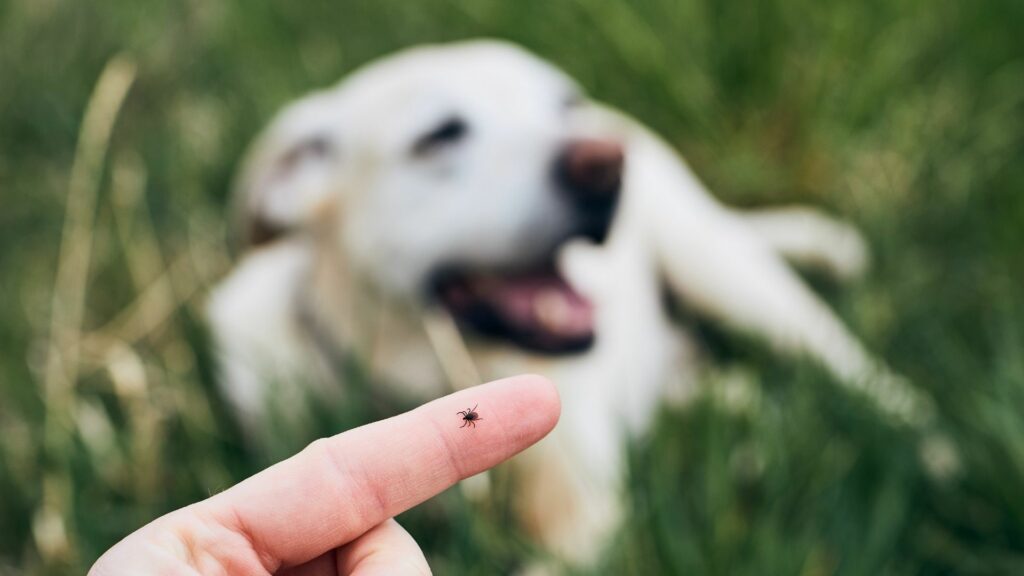The flowers are blooming, the sun is shining, and oh my goodness – what is that creepy thing crawling?!
While summer months mean more time outdoors with your pup, it also means they’re more likely to bring creepy, crawly things back indoors with (and on) them – ticks included. In fact, the weeks in March through mid-May, and again in mid-August to November, are infamously known as “tick season” because it’s when adult ticks are most active since the weather is above freezing.
If you’re not well-versed on ticks, you may be wondering, “why are these almost microscopic bugs such a threat to my dog?” Read on as we provide the 101 on tick season, along with helpful tips and tricks dog owners can try to best protect their pups from harm.
Contents
Why is Tick Season Such a Threat?
To understand why ticks are such a threat, it helps to first understand exactly how they infect dogs. Ticks attach themselves to dogs by inserting their mouthparts directly into their skin. And, because ticks’ mouths produce a sticky, glue-like substance, they easily adhere and remain attached to dogs from just one bite.
Once attached to your dog, ticks feed on their blood. This is why a tick infestation can be dangerous, because many ticks feeding on your dog at once can lead to an iron deficiency called anemia.
Whatsmore, ticks carry a host of diseases which can pass on to your pet – Lyme disease being the most common. If a tick infested with Lyme disease bites your dog, your dog can contract the disease, which leads to arthritis and swelling of their joints, which can be extremely painful.
Tips to Keep Your Pet Safe Throughout Tick Season
Tip #1: Protect Your Pup with the Proper Preventative Care
The best way to protect your dog from ticks starts with proper preventative care. From shampoos and sprays, to collars, pills, and even vaccines, consult with your vet to determine the right preventative treatment plan based on your location and your pet’s lifestyle. For example, dogs that run in fields in tick-prone areas will likely be recommended a combination of preventative treatments, while those living an apartment life in a city can get by with less.
These preventative methods help ensure that if your dog does come into contact with a tick, the tick won’t be able to bite or latch onto them.
Tip #2: Conduct Regular Checks
After bringing your dog outdoors, run a regular check for ticks before going back inside. This includes a thorough check of tick-prone areas (see the image above) so you can be sure to remove any as soon as possible. Afterall, the quicker you remove a tick, the less likely your dog will contract a secondary illness related to a tick bite.
Tip #3: Maintain Your Yard
Ticks thrive in tall grass and dense, wooded areas. To keep your yard as tick-free as possible, make it as uninhabitable as you can for them. This means keeping your lawn mowed short, and even spraying pesticides down to kill ticks (just be sure to keep your dog off the lawn immediately after treatment or use a pet-friendly treatment).
Remember, sometimes ticks can surpass even the most thorough preventative measures. If you notice a tick on your dog, you can attempt to remove it yourself with tweezers, or take it to your vet to have them do it for you.
While the majority of dogs exposed to ticks never develop a tick-borne disease, always remain vigilant and monitor them for signs – including vomiting, fever, swelling around joints, and lethargy – and consult your veterinarian as soon as possible to get your pet the proper care they need.


